Last Chance to Catch NYC's Holiday Notalgia Train
We met the voices of the NYC subway on our nostalgia ride this weekend!


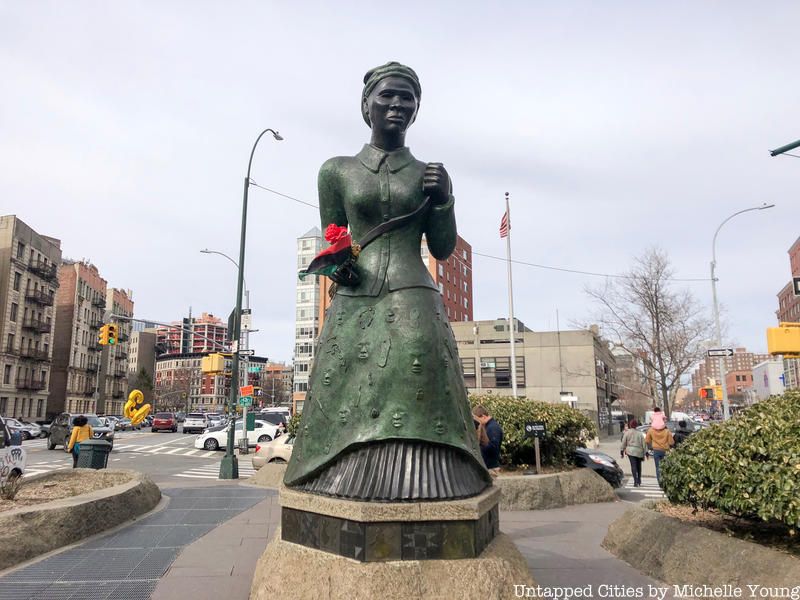
Around the time of the Civil War, New York City was, contrary to what some may think, rather pro-slavery. There were riots in the 1830s and 1840s against abolitionists and Black institutions, and a significant portion of New York’s economy relied on industries heavily supported by slave labor. On the other hand, New York City was also a major center of the Underground Railroad, allowing fugitive slaves to seek shelter in safe houses along their route further north. The Underground Railroad operated in intense secrecy, so much so that there are only a handful of locations across the five boroughs that verifiably served as safe houses. Quite a few had strong ties to abolitionist causes, though speculation remains about whether they actually served as safe houses. Regardless, the city, particularly Lower Manhattan and northern Brooklyn, aided thousands of escaped slaves over a few decades. Here is a list of locations across the five boroughs that had a hand in the New York Underground Railroad movement.
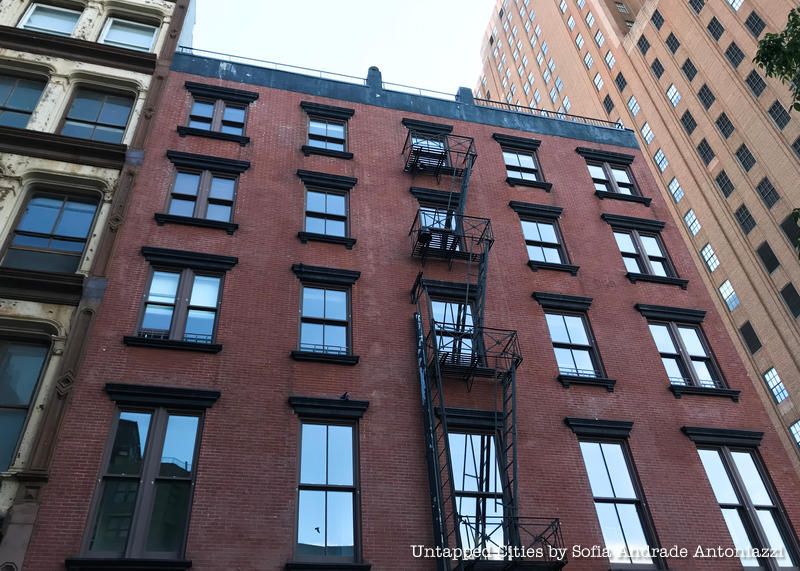
David Ruggles was an African American abolitionist in New York who helped fugitive slaves reach free states. He was born a free man in Connecticut around 1810 and arrived in New York at the age of 17. He quickly became an activist for African American rights and the abolitionist movement, writing articles and running the first African-American-owned bookstore in the U.S. The bookstore carried a large selection of abolitionist and early feminist books, including the writings of Maria Stewart. Ruggles was also a secretary of the New York Committee of Vigilance, which aided fugitive slaves and helped enslaved workers know their rights.
Ruggles’ home at 36 Lispenard Street was a veritable hub for both the Underground Railroad and African American activists and intellectuals. As part of the Underground Railroad, Ruggles’s home hosted an estimated 600 escaped slaves in transit, including famed abolitionist Frederick Douglass. Douglass wrote in his autobiography, “I had been in New York but a few days, when Mr. Ruggles sought me out, and very kindly took me to his boarding-house at the corner of Church and Lespenard Streets.” The original townhouse was demolished, and 36 Lispenard Street is now La Colombe Torrefaction coffee shop. The original basement has been preserved. While living at this home, Ruggles purchased a printing press, which he used to publish his own pamphlets and a magazine that he edited, the Mirror of Liberty. Ruggles fought against bounty hunters who would kidnap and sell free Black people in the North. Unfortunately, Ruggles, who was criticized by fellow abolitionists for his tactics, died penniless and blind at age 39, laden with financial troubles.

Located at 2 White Street, the Rev. Theodore Wright House stands out from the more modern and significantly taller buildings nearby. Wright was born free in 1797 and was educated in the African Free School. Wright was the first Black graduate of the Princeton Theological Seminary and a staunch abolitionist in a time of turbulent riots and strong anti-Black sentiment. He stated that true courage was not “to ask about the vileness of slavery, but to treat the man of color in all circumstances as a man and brother.” Wright founded the American Anti-Slavery Society, and while developing the organization, he served as a conductor on the Underground Railroad.
Wright’s home on White Street, built in 1809 as an 18th-century Dutch-style house, served as a stop on the Underground Railroad. The Federal-style home, an increasing rarity in Manhattan, has become a fashion destination of sorts, housing locations of J. Crew and Todd Snyder. Hidden behind its walls are stories of dozens of fugitives who took refuge in the home from 1842 to 1847. The home was not confirmed officially as a stop on the Underground Railroad (its landmark designation did not even mention Wright), though the tiny home may have been where 28 men, women, and children were given food and guidance to get to Albany.

The African Society for Mutual Relief functioned as an all-encompassing safety net, offering health insurance, an early form of life insurance, and assistance in paying for burial costs, in return for dues. It functioned as a school, a meetinghouse, and a potential stop on the Underground Railroad. Formed in 1808, the organization moved to 42 Baxter Street in 1820, thanks to the generosity of former Haitian slave Juliet Toussaint.
The group was led by African American orator William Hamilton, editor of The Colored American Philip Bell, and Harlem Railroad president Abraham Lawrence. Located in the Five Points neighborhood, the organization was known as “the crown jewel of all Black organizations.” During the 1834 anti-abolitionist riots, as well as the Draft Riots, the Society survived mostly unscathed. A New York state government building currently occupies the original location of the Society.
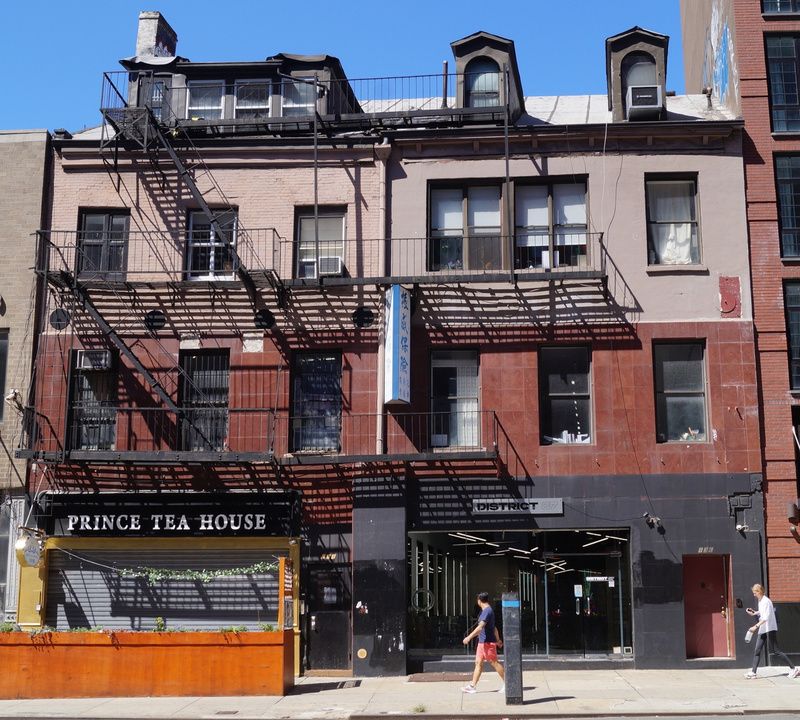
The two structures are a couple of the oldest in New York City. The homes were built in the late 1700s by Samuel Delaplaine, a member of a French Huguenot family with roots in Dutch New Amsterdam. Samuel and his wife Phila Pell were Quakers and abolitionists. From 136 Bowery Lane as it was known at the time, Samuel wrote an anti-slavery manifesto. The wealthy family also donated some of their land to St. Philip’s, New York City’s first African American Episcopal church, and they donated land on Christie and Rivington streets for an African cemetery.
In the 1800s, 134 was home to abolitionist Rev. Spencer H. Cone. The descendants of Samuel and Phila who continued to live in the homes for generations carried on their abolitionist legacy. Charlotte Delaplaine and her daughter Phila Amelia were members of one of NYC’s most prominent women’s anti-slavery societies, a Quaker-owned bookstore at 134 was run by abolitionists Effingham and Lewis H. Embree who sold Abolitionists’ works and printed anti-slavery materials, and it believed that boarding house-keeper Lucy Gilpin helped Underground
Railroad “conductor” Isaac Hopper harbor fugitive slaves. A proposal for landmark designation has been submitted to the Landmarks Commission.
The African Free School system was founded in 1785 as a segment of the New York Manumission Society, an organization that supported the abolition of slavery in the United States. The society in 1785 helped pass a New York state law prohibiting the sale of enslaved people sent to the state, preceding the national law prohibiting the slave trade by 23 years. The school began as a one-room schoolhouse that opened in 1794, supported by donations. The school grew into a new building on William Street in 1815, followed by a larger building on Mulberry Street. Around 1,400 students were enrolled in seven different school buildings at the school’s peak.
In the early 1830s, the school replaced its white teachers with Black teachers, especially after a controversial incident in which its leader Charles Andrews advocated the idea that Black Americans should set up a colony in Africa. Andrews was ousted after a large boycott, and eventually, the school was integrated into the city’s public school system. Many prominent members of the African American community went to the school, including James McCune Smith, the first licensed African-American doctor and active abolitionist; Patrick Reason, a famous engraver; and Henry Highland Garnet, an abolitionist, orator, and distinguished Presbyterian minister.
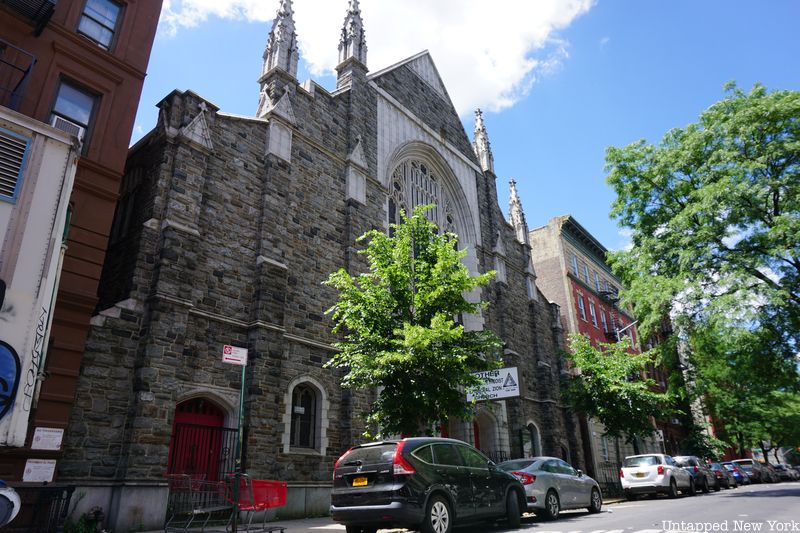
The Mother African Methodist Episcopal Church was the first Black church in New York State, founded in 1796. The church, known at the time as the Freedom Church, became a stop along the New York Underground Railroad. The church distanced itself from the Methodist Episcopal Church, which at the time practiced segregation. The church was also a focal point of Black social activism, attended by Frederick Douglass, Harriet Tubman, and Sojourner Truth. Truth was a member of the church and would give talks to the congregation about the abolitionist cause. Because of the church’s association with abolitionism, it was subject to a three-day anti-Black riot in 1834. At the church, 1,500 people gathered in 1850 to protest and raise nearly a thousand dollars to overturn the capture of James Hamlet, who was sent back to Maryland after gaining his freedom.
The church relocated to Harlem in 1925 to its present-day location at 140-7 W. 137th Street. Though nearly a century later, the church continued to pull in high-profile and influential Black figures, including Paul Robeson. He spoke from the pulpit about civil rights causes, during which time he worked with leading Harlem Renaissance figures including Langston Hughes. Bertha Des Verney, a musician and playwright, hosted community outreach events and fundraisers as the church’s choir and drama director.
Downing’s Oyster House was one of New York’s most famous oyster houses of the 19th century. Nicknamed the “New York Oyster King,” Thomas Downing was one of the wealthiest New Yorkers at the time of his death and used his influence to spread awareness of abolitionist causes. Downing, born to freed slaves, moved to New York and began selling his oysters on the street. He would cater to the elite of New York and secure the highest-quality oysters from captains before their auction. He eventually opened Thomas Downing Oyster House in 1825, adorned with chandeliers and expensive silverware and linens. The restaurant was located on the outskirts of Five Points, a predominantly African American neighborhood, and featured significantly more lavish fare than any of its competitors.
As Downing expanded his restaurant operations, he leveraged his growing fame for abolitionist purposes. Between 1825 and 1860, Downing and his son helped fugitive slaves reach Canada by sheltering them in the restaurant’s basement. Few diners knew of these secret operations, which kept fugitives safe from bounty hunters. He also founded the United Anti-Slavery Society of the City of New York and advocated for equal Black male suffrage.
Located on 330 Pearl Street, the Colored Sailors’ Home was a lesser-known New York Underground Railroad site with a fascinating history. The Colored Sailor’s Home was opened by abolitionist William Powell and it served as a boarding house for sailors of color. The sailors were provided with food and safe housing, and they received professional guidance as well as various other employment opportunities. In a series of letters, Powell outlined the struggles of many Black sailors arriving in New York with no place to stay, which he notes goes against the idea that the North is freer than the South.
In addition to sheltering Black sailors, the home was also an important stop on the Underground Railroad. Anti-slavery activists would meet at the home, and Powell disguised fugitive slaves and gave them food and shelter. William Powell would eventually move to Europe and the home was transferred to Albro and Mary Lyons, who continued Powell’s legacy. The Lyons lived in the home from about 1851 to 1862, continuing to shelter Black sailors and fugitive slaves. It was estimated that Powell and the Lyons family assisted over 1,000 fugitive slaves en route to the North.
Shiloh Presbyterian Church in the Financial District was founded alongside a handful of others that catered to the African American population of Lower Manhattan. The church was first founded on Rose Street in 1822 as the First Colored Presbyterian Church. Its founder was Samuel Cornish, the man who founded the nation’s first Black newspaper Freedom’s Journal. After moving to Frankfurt Street, the church was led by Theodore Wright, whose home was located at 2 White Street. During the mid-1800s, the church also served as a stop on the New York Underground Railroad, aiding dozens on their journey north.
During the Civil War, the church was led by Henry Highland Garnet, who attended the African Free School and gave the 1843 “Address to the Slaves,” urging them to rebel against their masters. Garnet led the church in boycotting industries that were products of slave labor and held a memorial for John Brown after his hanging in 1859. The church also assisted the Black population during the 1863 Draft Riots. Garnet was also the first African American to address the U.S. House of Representatives, doing so in February 1865 urging them to abolish slavery. A descendant church of Shiloh Presbyterian is now in Harlem.
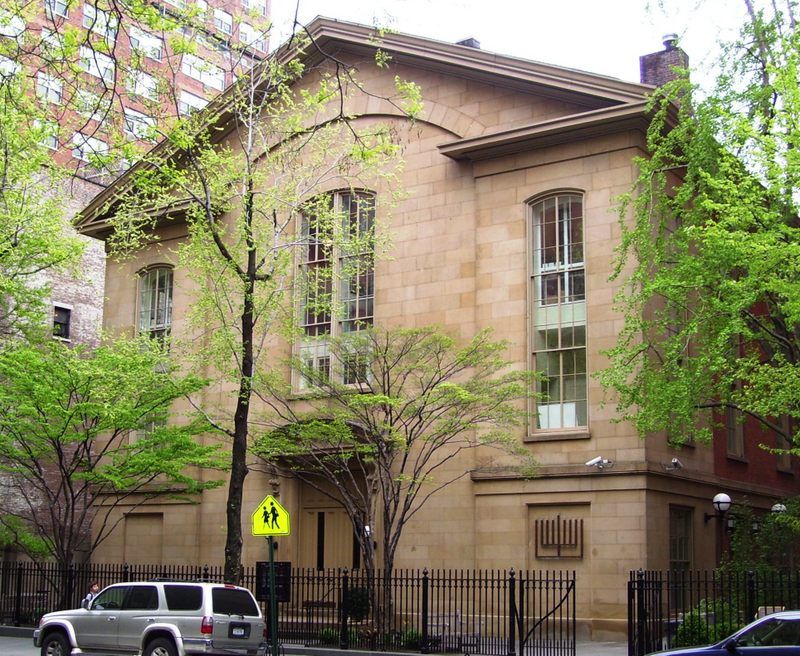
The Brotherhood Synagogue in Gramercy Park played a significant role in the Underground Railroad, as well as in more recent progressive causes. The synagogue is located on the land of the former 20th Street Meeting House, a Quaker group whose members were active in the abolitionist movement. Some members reportedly moved south to launch trade schools for freed slaves. Historical records also note that the meeting house’s second-floor sheltered fugitive slaves on the New York Underground Railroad. Still remaining on site is a tunnel underneath the building used as an escape route to not draw suspicion.
Eventually, Rabbi Irving J. Block opened a Jewish congregation at the site in 1954. The Brotherhood Synagogue operated for over 20 years at the site of the Village Presbyterian Church nearby before moving to 28 Gramercy Park South. The synagogue was the first in the city to open a homeless shelter, and it has collaborated over the years with other religious groups across the city.
In the West Village, there are at least two residential locations connected to the Underground Railroad. The first is 95 Barrow Street, once a New York Underground Railroad safe house. The residence dates back to 1847 and is speculated to have been a notable shelter for fugitive slaves. It was also home to modern dance pioneers Alwin Nikolais and Murray Louis. The home was on the market in 2015 for $21,900 a month in rent.
The second is a mansion at 45 Grove Street, which dates back to the 1830s. The home was likely a secret stop on the Underground Railroad. Perhaps more surprisingly, actor Samuel K. Chester, who lived at the home, said John Wilkes Booth visited in 1865 and attempted to get him to join in on Booth’s conspiracy to overthrow the government. Later that year, Booth would assassinate Abraham Lincoln.

Around the time activists tried to secure landmark status for 227 Duffield in Brooklyn, another endangered home that played a role in the New York Underground Railroad was at risk. Located at 857 Riverside Drive, the two-story home has been threatened with demolition, and the Landmarks Preservation Committee rejected the request to grant the home landmark status. The home is the only structure above 29th Street that many consider a significant location for the Underground Railroad. According to a recent report, the house was owned from 1852 to 1854 by Dennis Harris, an abolitionist minister who may have had close ties to the Underground Railroad.
It remains conjecture that the home served as a safe house for fugitives, though it is strongly documented that Harris was outspoken against slavery, inviting Underground Railroad leader Sydney Howard Gay to speak at his Wesleyan Methodist church downtown. Harris also operated a sugar refinery in TriBeCa, described at the time by an Underground Railroad operator as “a sort of Grand Central Station of the Underground Railroad.” Harris eventually rebuilt his refinery near his Washington Heights home after the previous location burned down, and he also bought a steamboat perhaps with the intention of establishing a new Underground Railroad stop. The home has lost much of its architectural integrity after losing its wraparound porch and octagonal cupola, making it challenging to landmark on historic architectural merit.
This Greek Revival townhouse is one of Manhattan’s more northern Underground Railroad junctions, as well as one of the only documented stops on the Underground Railroad in Manhattan. Located at 339 West 29th Street, the home was constructed alongside a row of Greek Revival townhouses, attracting philanthropists and abolitionists Abby Hopper Gibbons and James Sloan Gibbons. The Gibbons family were abolitionists years prior to the Civil War and opened their home to others sympathetic to the cause. It is reported that William Lloyd Garrison dined there with an escaping slave.
During the Draft Riots of 1863, the house was attacked and burned, an unfortunate reality in which many homes of Black residents were firebombed, including a Black orphanage. Two of the Gibbons daughters managed to escape through the roof onto adjacent properties and finally into a carriage on 9th Avenue. This makes the home one of the last surviving sites of the Draft Riots. In 2011, the home became contentious when the building owner began to add an additional fifth floor. The home received landmark designation in 2017 and was denied the application to legalize the fifth-story addition.
This church, now known as the Broadway United Church of Christ, was erected in 1836 and has been a central gathering point for many social movements, including abolition, women’s suffrage, temperance, and civil rights. Now located on West 71st Street, the church was originally organized by abolitionist Lewis Tappan for Charles Finney, a leader of the Second Great Awakening. Leaders of the church raised a defense fund for those captured aboard the Amistad, eventually leading to the formation of the American Missionary Association that established schools and churches for freed slaves.
Frederick Douglass spoke at the church, as did William Lloyd Garrison and Sojourner Truth. During a particularly violent incident, Truth helped break up a hostile mob during a women’s suffrage meeting at the church. The church raised funds to purchase slaves’ freedom and published The Independent, an anti-slavery newspaper. Though the church did not serve as a stop on the New York Underground Railroad, it played an important role in raising awareness and funds for those looking to escape slavery and find safety in the North.
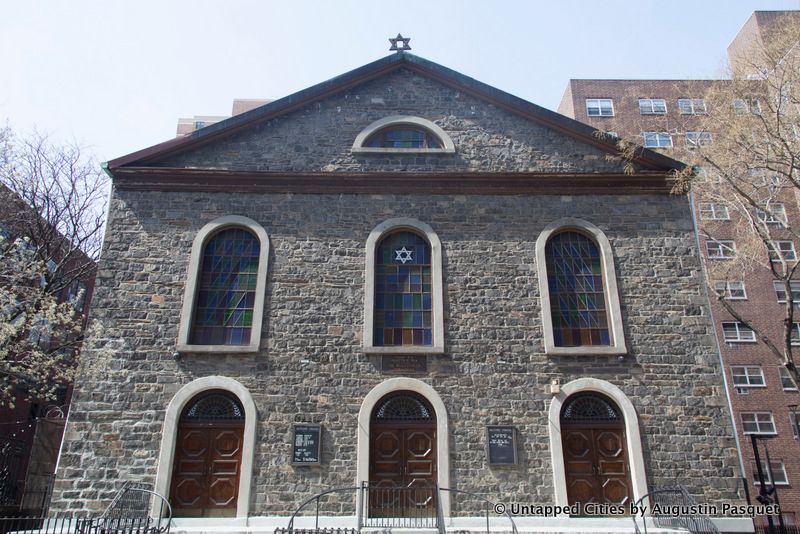
On the Lower East Side sits Bialystoker Synagogue, which dates back to 1826 (making it the oldest synagogue building still in use in New York City). Originally housing the Willett Street Methodist Episcopal Church, the synagogue purchased the building in 1905). The Federal-style building was constructed out of Manhattan schist, and the synagogue gets its name from its Torah Ark, which was likely carved in the Polish city of Bialystok.
When the building first opened, it is believed that it was used as a rest stop for the New York Underground Railroad. Runaway slaves were believed to have found safety in the building’s attic on their route north. The attic is today accessed behind a camouflaged door by the corner of the women’s gallery. The synagogue was added to the National Register of Historic Places in 1972.
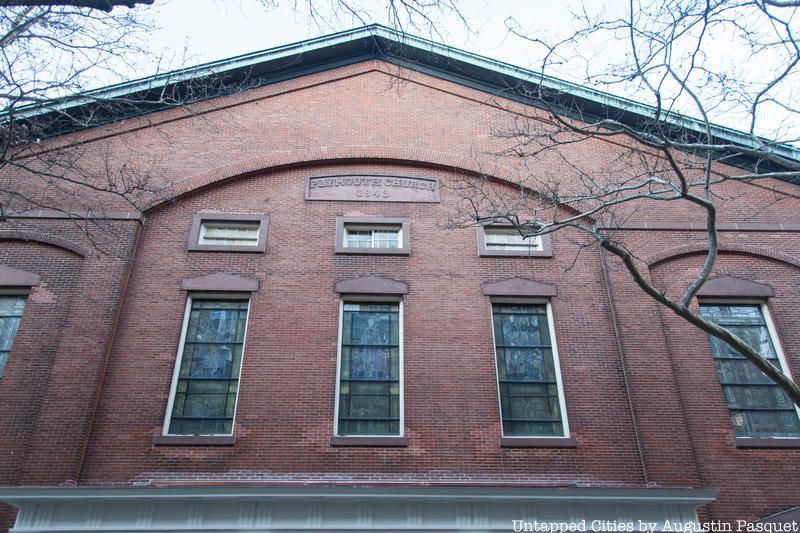
Plymouth Church was founded in 1847 by a group of nearly two dozen New England transplants to Brooklyn. Its first pastor was the eminent Henry Ward Beecher, the brother of Harriet Beecher Stowe, the author of Uncle Tom’s Cabin. Beecher was a tireless abolitionist who gained fame for his namesake “bibles,” or rifles he sent to abolitionists fighting in Kansas. Plymouth Church was known as Brooklyn’s “Grand Central Depot” of the New York Underground Railroad for its prominent activity in helping slaves escape and gain their freedom. Beecher would hold mock auctions at the church during sermons, where he would urge people to bid for the freedom of escaped slaves while simultaneously exhibiting the horrifying aspects of enslavement.
Sojourner Truth, Frederick Douglass, and William Lloyd Garrison all spoke at Plymouth Church. Abraham Lincoln visited and worshipped in the church in February 1860; he was, at the time, an unannounced presidential candidate. Lincoln was scheduled to speak at Plymouth Church during that same visit, but the venue was relocated at the last minute to Astor House in Manhattan, where he gave an anti-slavery speech that helped him win the Republican presidential nomination. The pew Lincoln sat in is now marked with a silver plaque, and Plymouth Church remains the only church in New York City that he attended. The original building burned down in 1849, which enabled the congregation to build a grander sanctuary seating 2,800. This building is now a national historic landmark that contains a piece of Plymouth Rock, one of two in the city.
86 Pierrepont Street was the home of Sydney Howard Gay and Lewis Tappan, both prominent abolitionists. Located within the Brooklyn Heights Historic District, the historic home is one of Brooklyn’s most important abolitionist-related residences. Lewis Tappan was a founder of the American Anti-Slavery Society, as well as the American Missionary Association. With his brother Arthur, Lewis Tappan led fundraising and advocacy efforts for the legal help and acquittal of fugitive slaves. His daughter Julianna served as an officer in the Ladies New York Anti-Slavery Society as well.
After a series of anti-slavery riots, Tappan moved into the home with his first wife Susannah, where he lived for his remaining years. Susannah passed away in 1853, after which he married the abolitionist Sarah. Lewis passed away in 1873, eight years after the end of the Civil War and the abolition of slavery nationally.
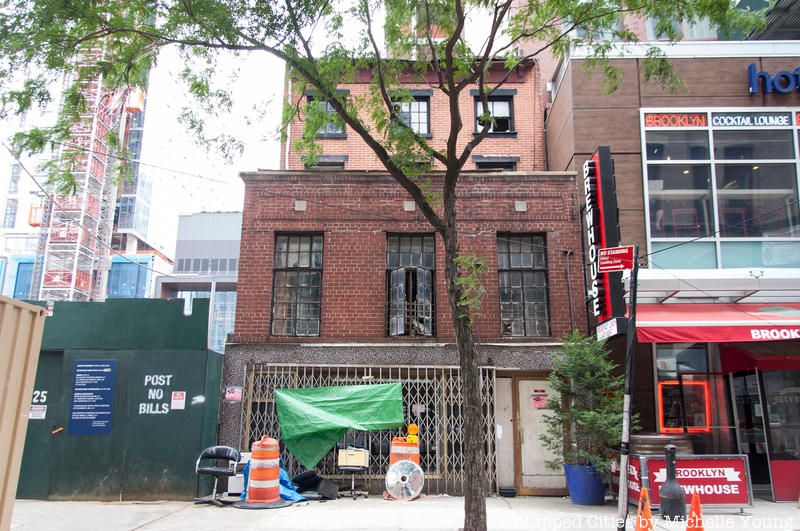
The houses at 227 and 233 Duffield Street, as well as at 436 Gold Street, were reportedly stops on the New York Underground Railroad. As documented in the lawsuit FUREE v. Bloomberg, residents claim there is a tunnel connecting the basements of the houses on Duffield Street. The Downtown Brooklyn and Brooklyn Heights neighborhoods were major focal points of the abolitionist movement. Thomas and Harriet Truesdell, both staunch abolitionists, lived at 227 Duffield. Thomas Truesdell attended the 1836 Rhode Island Anti-Slavery Convention, while Harriet Truesdell was an active member of the Providence Female Anti-Slavery Society and a planning committee member of the Anti-Slavery Convention of American Women in 1838. The Greek Revival rowhouse was built between 1847 and 1850, and the home was where William Lloyd Garrison stayed before attending London’s World Anti-Slavery Convention. 233 Duffield Street may have been a “feeding station” for escaped slaves, though records are less conclusive.
These properties were the center of controversy between residents and developers who wanted to demolish the buildings through eminent domain to make way for the Atlantic Yards (now the Pacific Park) development project. Non-profit organization FUREE (Families United for Racial and Economic Equality) entered into a lawsuit with resident Joy Chatel against Mayor Bloomberg, members of his staff, the Economic Development Corporation, the City of New York, the Department of Housing and Preservation, and the City Council of New York City. In the brief, the plaintiffs contested the NYC Economic Development Corporation-commissioned report for lack of thoroughness and incomplete research methodology, including failure to hire an archaeologist to examine the basements. While 227 Duffield Street gained landmark status recently, other buildings on the street have been demolished. Plans for the development of Albee Square, called City Point, are still in development. You can celebrate the anniversary of the landmark designation on Wednesday, February 22nd at a panel talk with activists at the Heritage Center!
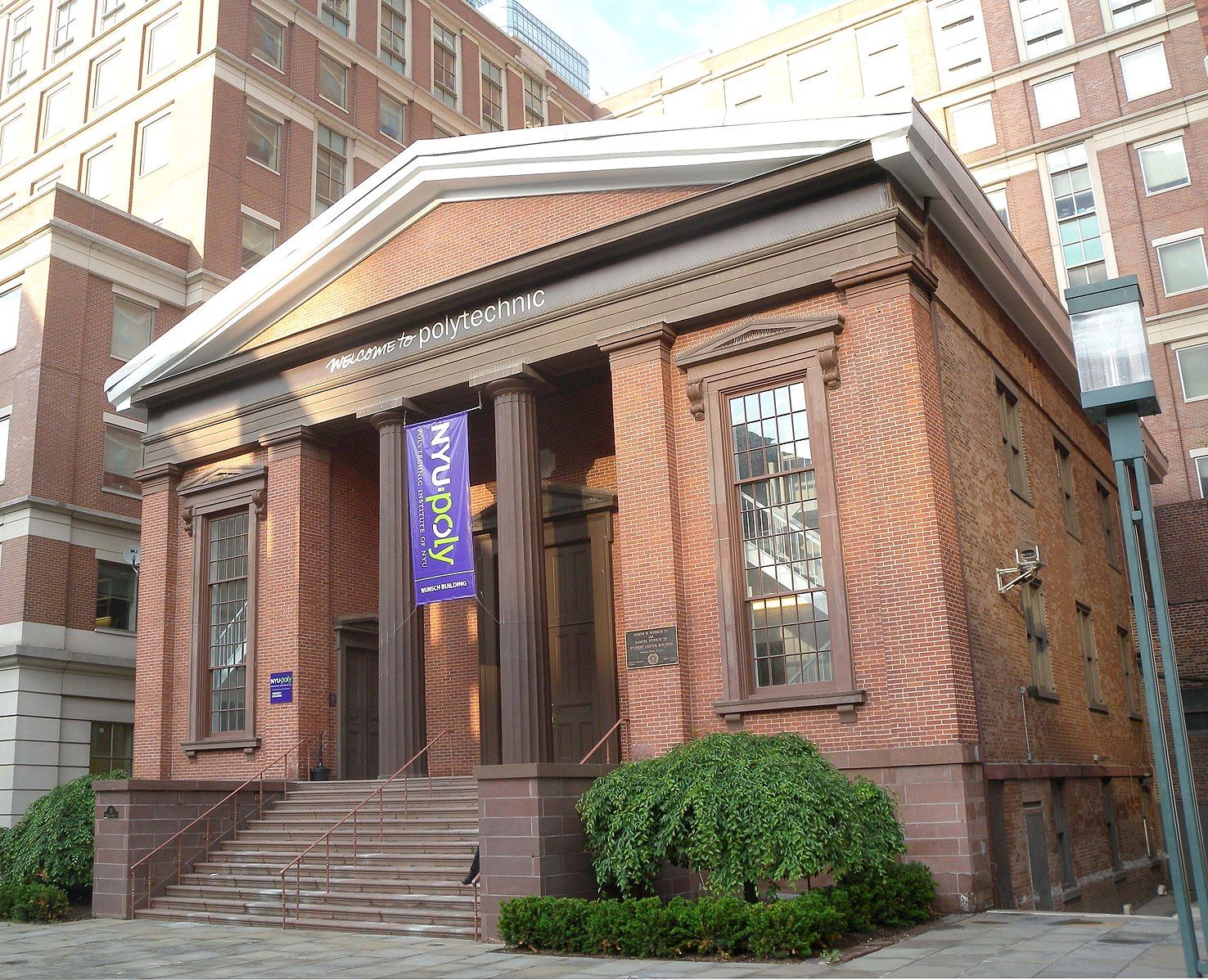
The Wunsch Building now belongs to NYU’s Tandon School of Engineering in Downtown Brooklyn, though it used to house the Bridge Street Methodist Church. Located at 311 Bridge Street, the church was erected in 1844 in the Greek Revival style, operating at the time as the First Congregational Church. From 1854 to 1938, it was the African Wesleyan Methodist Episcopal Church. It was the first independent Black church in Brooklyn, and it is believed to have been a stopping point on the New York Underground Railroad. Some believe that tunnels connect the former church to 227 Duffield Street. It was said that fugitive slaves, who would sleep in a subcellar and may have left wall markings, were housed and fed in the basement.
The building was designated a historic landmark in 1981, and today houses the admissions department for undergraduate and graduate students. In the AIA Guide to New York City, the building was described as “A Greek Revival temple in brick with wood columns and entablature: chaste, excepting the later Victorian stained glass, which is exuberant even from the outside.”
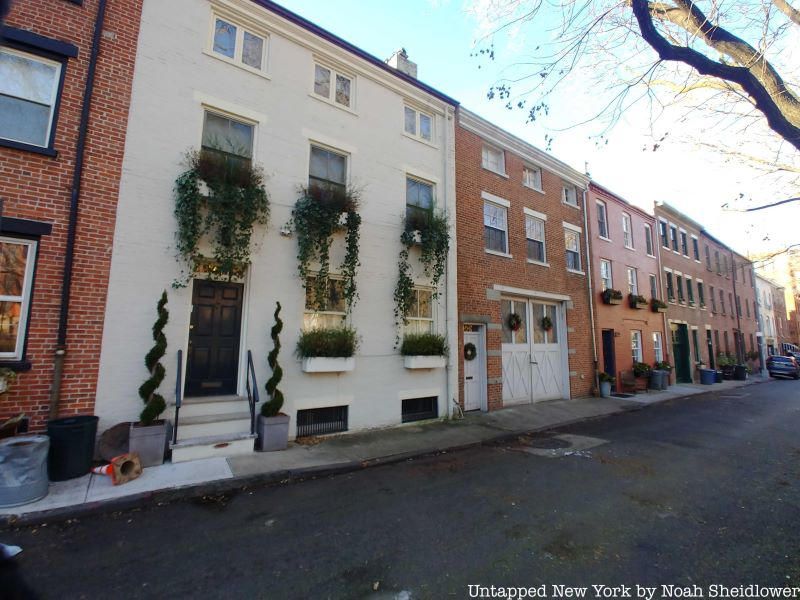
Cobble Hill’s Verandah Place is an architectural gem, a row of carriage houses lining Cobble Hill Park. The homes were constructed between 1840 and 1860 to house the horses (and servants) of some of Brooklyn’s wealthiest residents. One home, a three-story gray structure at 20 Verandah Place, has a little-known connection to the Underground Railroad.
Though little is known about the home’s specific role, 6sqft reported that the home served as a stop on the New York Underground Railroad, potentially hiding fugitive slaves inside. The home went on sale for $4.4 million in 2017, though much of its abolitionist history has been forgotten.
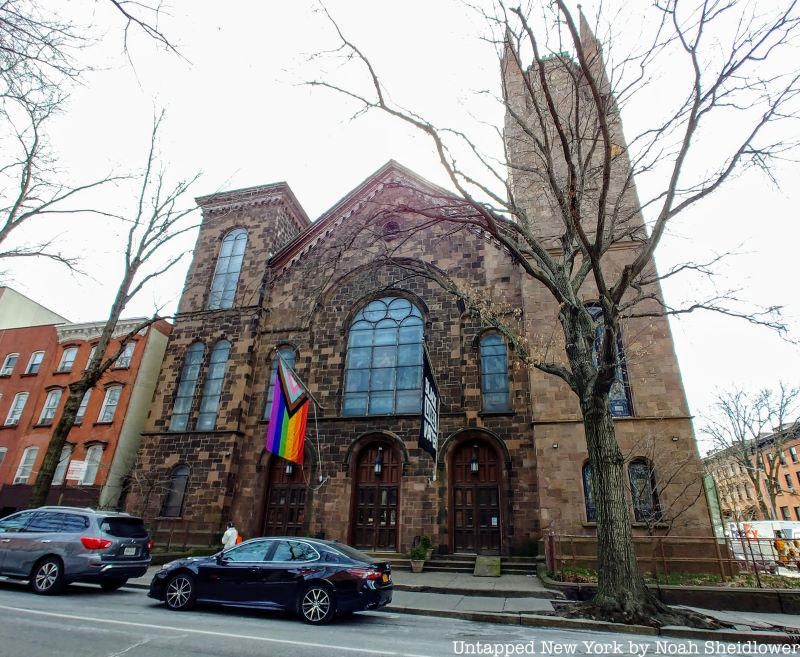
Lafayette Avenue Presbyterian Church, located in Fort Greene, may have served as a stop on the New York Underground Railroad. The congregation was established in 1857 as Park Presbyterian Church, during which time it served as a “temple of abolition.” The church’s first pastor, Theodore Ledyard Cuyler, pressured Abraham Lincoln to put an end to slavery. Both Frederick Douglass and Harriet Tubman may have spoken there.
Little is known about the church’s involvement with the Underground Railroad, though the church was well ahead of its time by welcoming women as preachers during the 1860s. Temperance advocate Susannah Evans, Quaker evangelist Sarah Smiley, and freed slave Amanda Berry Smith all took to the pulpit. The Fisk Jubilee Singers, an African American a cappella ensemble from Fisk University, performed a concert in 1871.
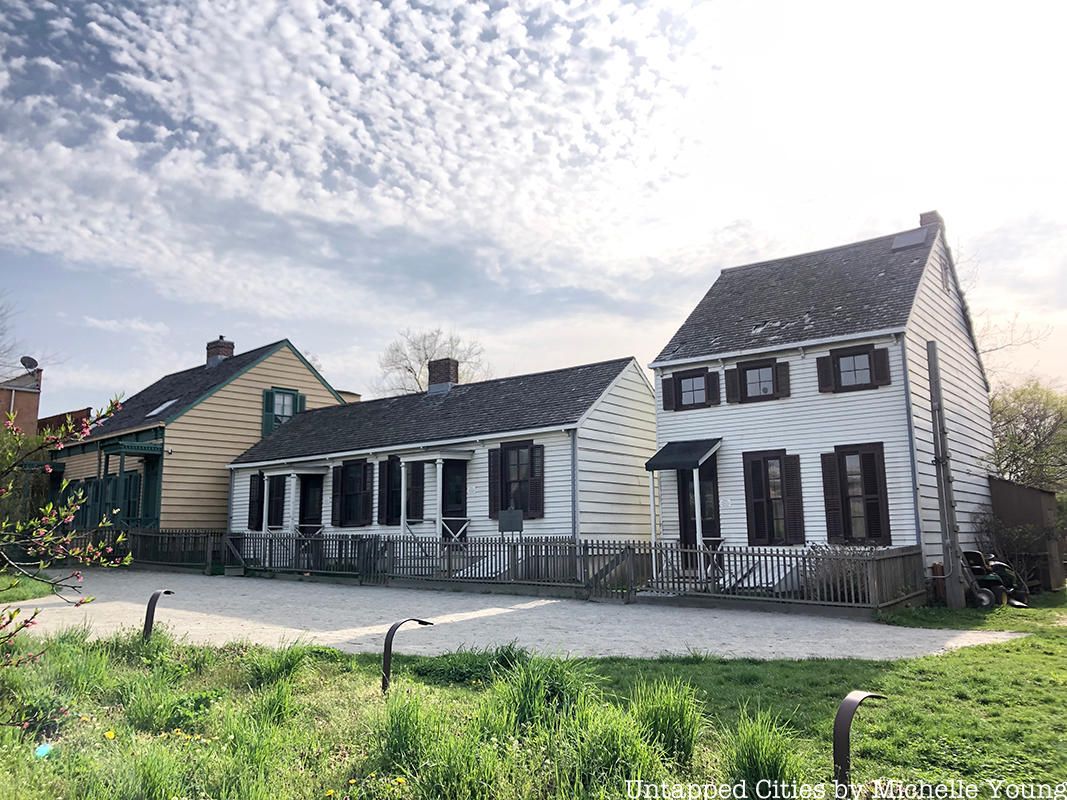
Like Seneca Village in what would become Central Park, Weeksville was a neighborhood that was founded by free African Americans, situated in modern-day Crown Heights, Brooklyn. Weeksville was founded in 1838 by James Weeks, an African-American longshoreman who bought land from Henry C. Thompson, a free African American land investor. The land was previously owned by an heir of John Lefferts, a member of the U.S. House of Representatives. Weeksville is speculated to have been a station on the New York Underground Railroad, though there is little evidence to support this.
By the 1850s, Weeksville’s population had surpassed that of Seneca Village, with upwards of 500 residents from across the East Coast, with over a third of residents born in the south. Weeksville was home to two churches, a school (Colored School No. 2), and a cemetery, as well as the Howard Colored Orphan Asylum. Weeksville also had one of the first African-American newspapers called the Freedman’s Torchlight and served as headquarters of the African Civilization Society. Additionally, the area was a refuge for many African Americans who left Manhattan during the 1863 Draft Riots. Four historic houses dating back to the time of the village collectively make up the Hunterfly Road Houses, listed on the NRHP in 1972. The discovery of these houses led to the creation of the Weeksville Heritage Center dedicated to the preservation of Weeksville.
The Friends Meeting House in Boerum Hill is thought to have been an Underground Railroad stop, though there is little information about the meeting house’s role. Like other meeting houses, including the Old Quaker Meeting House in Flushing, leadership and members alike on the whole supported abolitionist causes and raised awareness and funds to help free slaves and get them educational and employment opportunities. They espoused the belief that all people contain “God’s inner light.”
The Greek Revival Italianate-style meeting house was built in 1857 with a red brick facade. A three-story red brick building housing the school was built adjacent to the meeting house in 1902. The meeting house and school were added to the National Register of Historic Places in 1982.
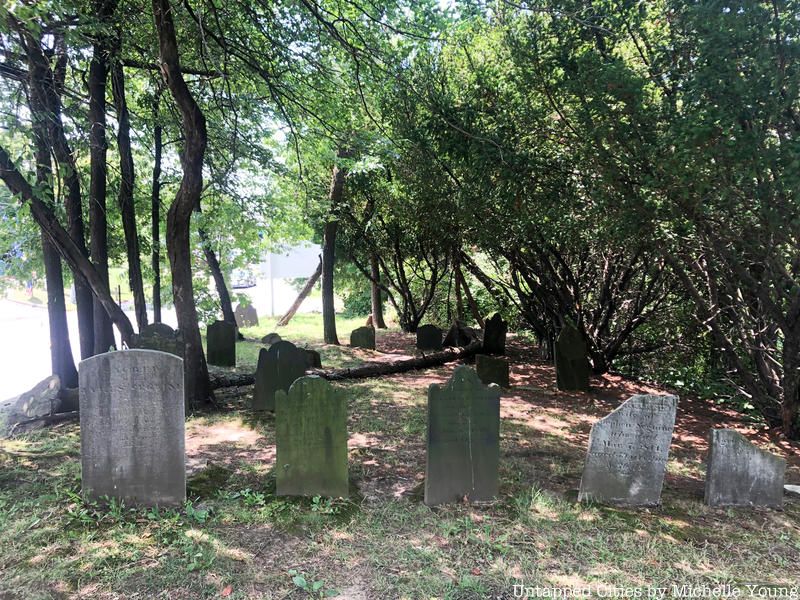
Sandy Ground was a community in Rossville, Staten Island, founded by free African Americans around 1828. It was one of the largest free Black communities in New York City, founded after an African American man named Captain John Jackson purchased land in the area. Jackson captained a ship that traveled from Rossville to Manhattan, the only direct mode of transportation at that time. The land became a center of oyster trading, and many residents would harvest and sell oysters at nearby Prince’s Bay. Harsher laws in the South led many residents involved in the oyster industry to move here from the Chesapeake Bay region of Maryland.
Sandy Ground was not as large as Weeksville, but it contained over 50 homes, including the Reverend Isaac Coleman and Rebecca Gray Coleman House. The Baymen’s Cottages, another landmark, were built between 1887 and 1898 for oyster workers at the height of Sandy Ground. It was also an important stop on the Underground Railroad. Rossville AME Zion Church was perhaps the most significant structure within the community, erected in 1854 and led by notable abolitionist Reverend Thomas James. A newer church was built in 1897 and remains today in much of its original form.
The settlement is also currently considered one of the oldest continuously settled free Black communities in the U.S. A church, a cemetery, and three homes from the settlement are today designated as New York City landmarks, Today, the Sandy Ground Historical Museum is home to the largest collection of documents detailing Staten Island’s African American culture, history, and freedom.
The Dr. Samuel MacKenzie Elliott House is a historic home in Staten Island’s West New Brighton neighborhood. Elliott was a prominent eye doctor and an outspoken abolitionist who acquired property to establish the residential community of Elliottville. Elliott gained attention for treating clients including Peter Cooper and John Jacob Astor. The community included a number of Gothic-style homes, including 69 Delafield Place which dates back to around 1850. The development attracted many New England abolitionists and literary progressives. This home is defined by its stone exterior and gable roof, standing 2 1/2 stories high. It may have been designed by Calvin Pollard, who created an early design for Brooklyn Borough Hall.
Elliott’s home is documented to have been a major stop on the Underground Railroad. The home had a large cellar and fireplace that some believe may have been a hiding spot for fugitive slaves. The home was one of the most influential abolitionist sites on Staten Island, and it was added to the National Register of Historic Places in 1980. Elliott’s home is also located near 198 Davis Avenue, the home of Civil War hero Robert Gould Shaw who commanded the Northeast’s first all-Black regiment.

The Bowne House, one of the oldest buildings in the five boroughs, was built in 1661 by John Bowne, an English immigrant honored as a pioneer of the struggle for religious freedom in America. The Bowne House was the first place for worship for the Quakers in Flushing, built after Bowne fought for the right of Quakers to practice their religion and have equal rights in Dutch New Amsterdam. Built using English building techniques but based on a Dutch plan, the house mixes together the two architectural styles found in colonial New York. Nearly two decades after its construction, the Bowne House operated as a stop on the New York Underground Railroad network.
A letter of introduction that was carried by a fugitive on the Underground Railroad was discovered in 2016. The letter, addressed to a lawyer named William Parsons, was penned by Simeon Smith Jocelyn, a prominent abolitionist and social reformer at the time. Jocelyn founded New Haven’s first Black church and schools for New Haven’s Black residents, and he had plans to found a “Black Yale” for emancipated slaves. Jocelyn also co-founded the Amistad Committee to fundraise for the imprisoned Africans who killed the captain of their slave ship. Parsons, the letter’s addressee, was the younger brother of abolitionists Samuel Bowne Parsons and Robert Bowne Parsons, who were likely conductors on the Underground Railroad. Though the lack of information regarding dates is unclear, Robert and William were residents of Bowne House in 1850, suggesting the home may have been a stop. The Bowne House has been a museum since 1947 and hosts visitors, tours, and researchers. Most of the museum’s 5,000 objects are original to the house.
The Macedonia A.M.E. Church may have been one of the only religious institutions in Queens to have been used as a station on the New York Underground Railroad network. The church is the third oldest religious organization in Flushing, beginning in 1811 as the African Methodist Society. From its start, the church catered to a diverse congregation that included Black, white, and Native American congregants.
As expected, many members of the church were very active in the fight to end slavery. A larger church was constructed in 1837 as the congregation grew. It is likely the church worked alongside other Flushing institutions including the Bowne House and Old Quaker Meeting House to raise awareness and funds for abolitionist causes.
Of the five boroughs, the Bronx has the least documented Underground Railroad history, though there are some tidbits of information suggesting the borough played a significant role. According to a Spectrum News article citing Lloyd Ultan, a Bronx historian, fugitive slaves would cross the Harlem Bridge (now the 3rd Avenue Bridge) and stop at a villa on 143rd Street and 3rd Avenue. A lawyer owned the home and used his basement as a hiding spot.
Escaped slaves would journey up to 163rd Street, then up Boston Road to the Mapes Farm. The Mapes family would assist people by transporting them secretly on wagons, covering them with blankets, and traveling at night. The route would take them through the present-day Bronx Zoo into Westchester.
Next, check out 36 Black History Sites to Discover in NYC!
Subscribe to our newsletter